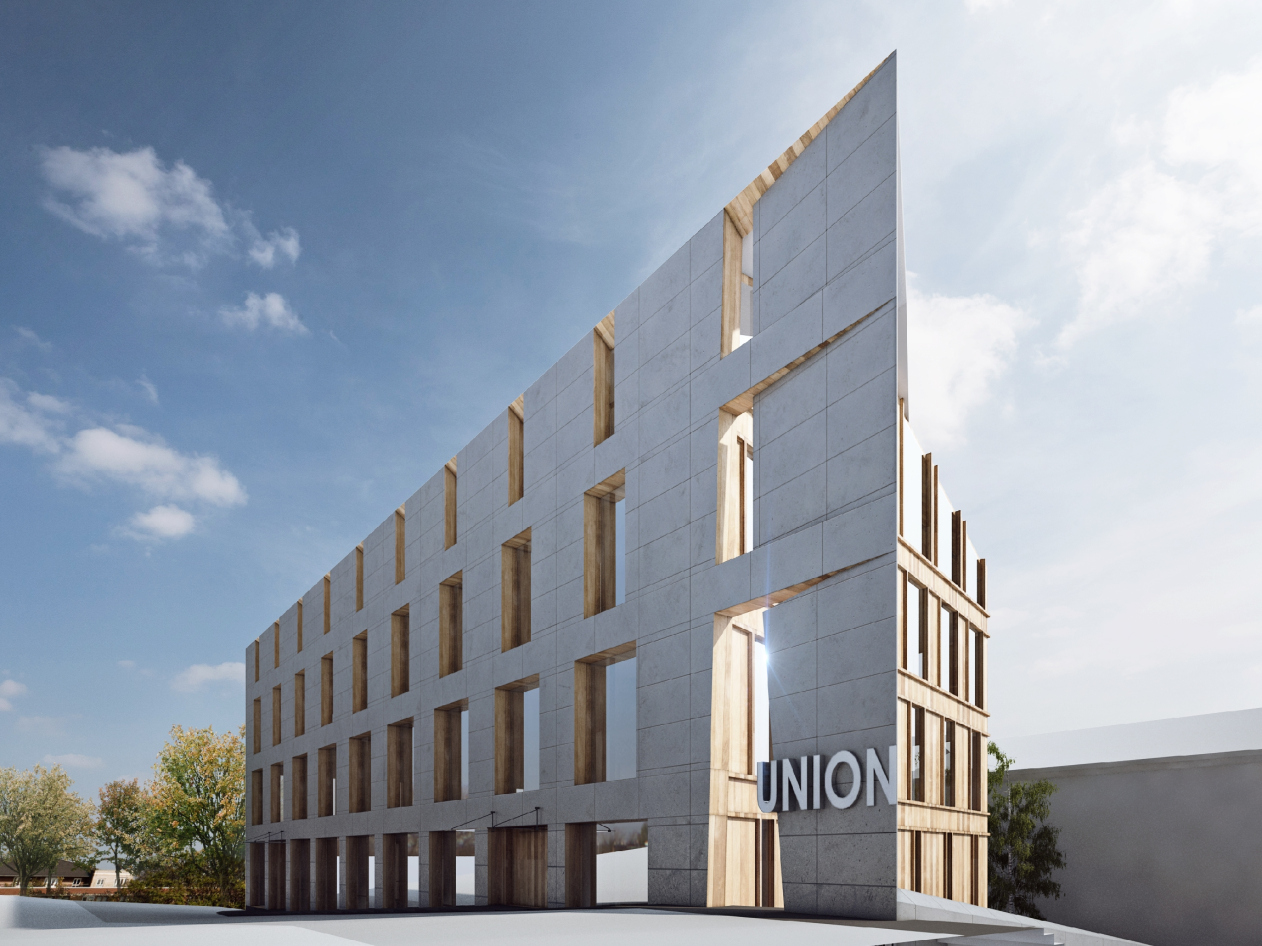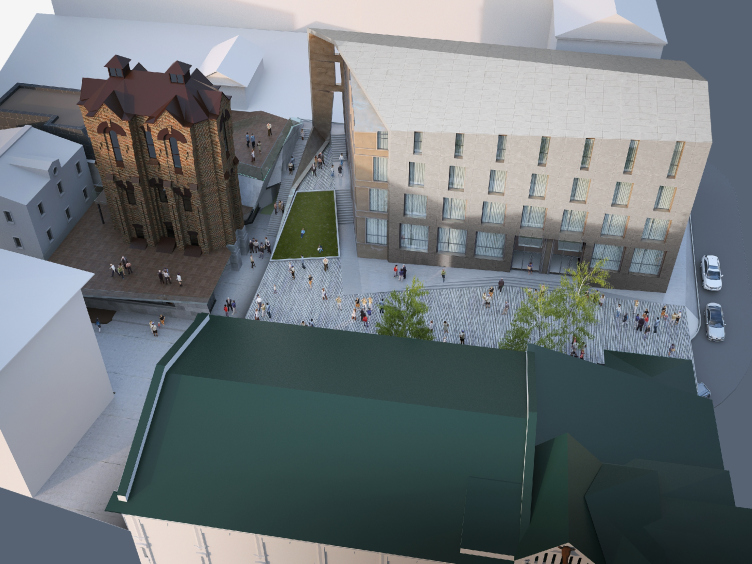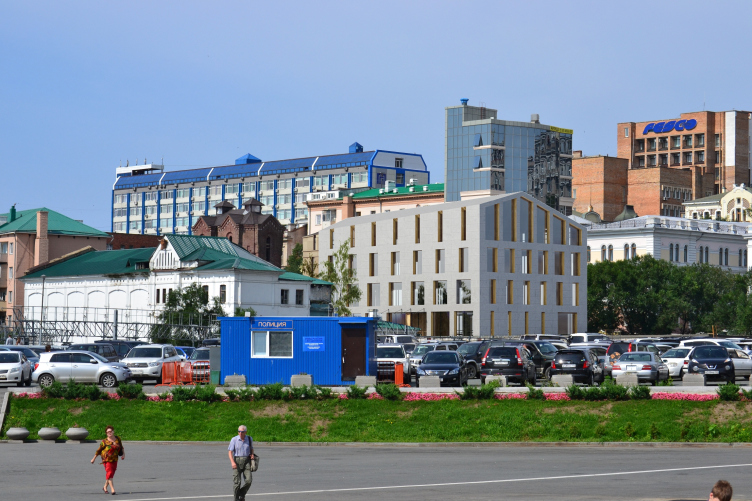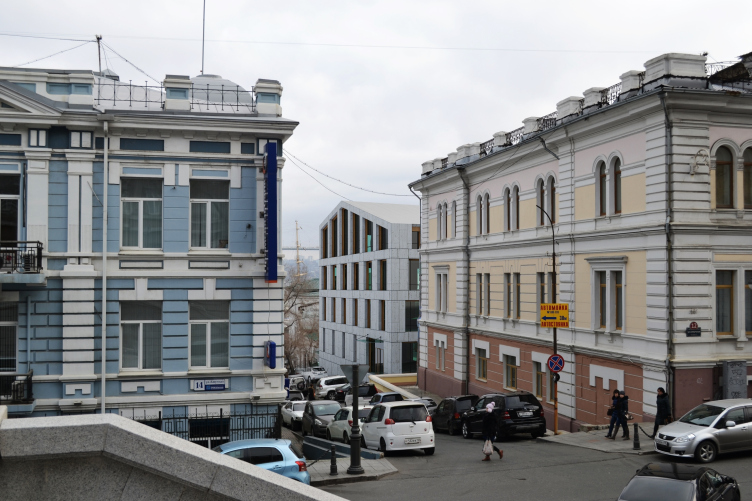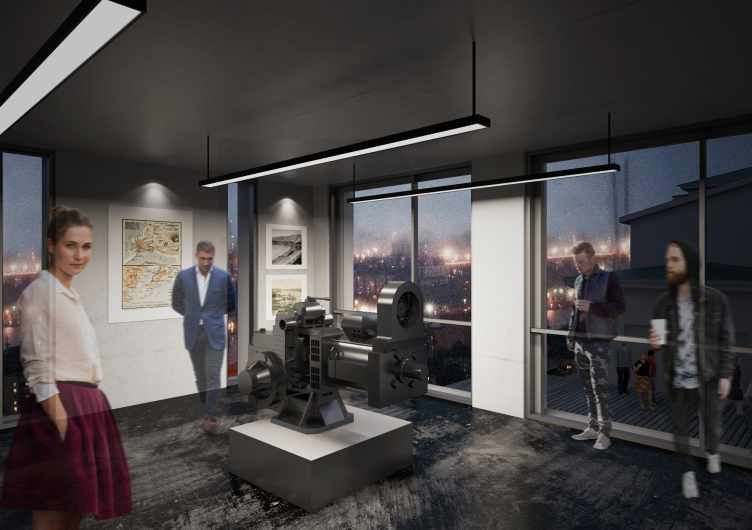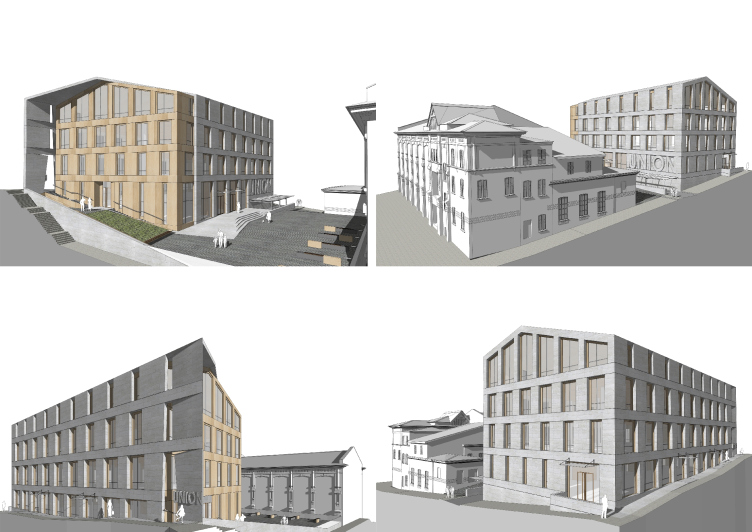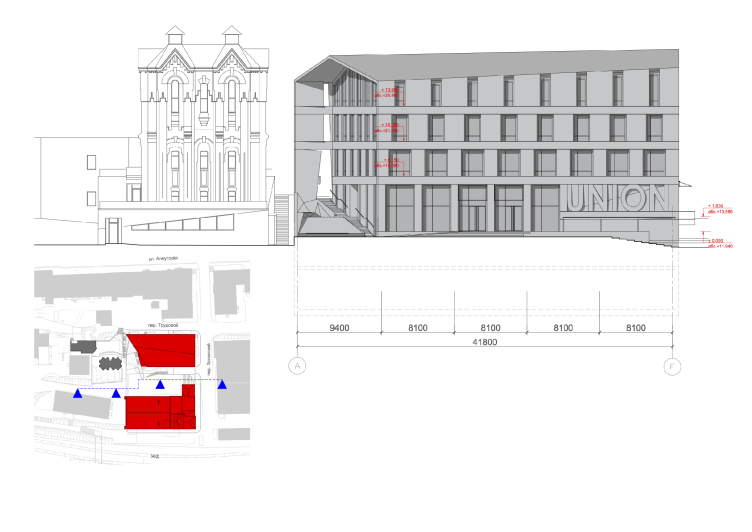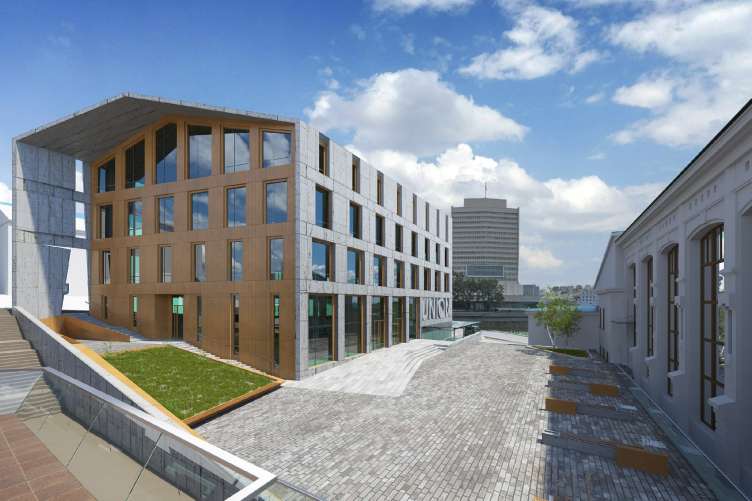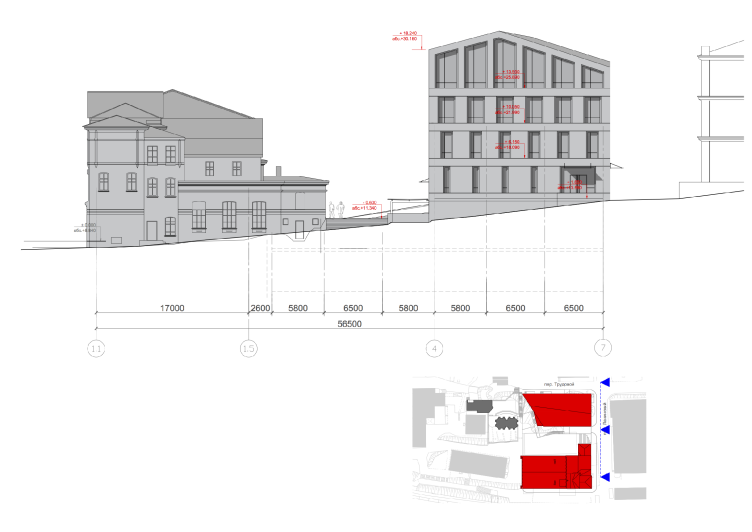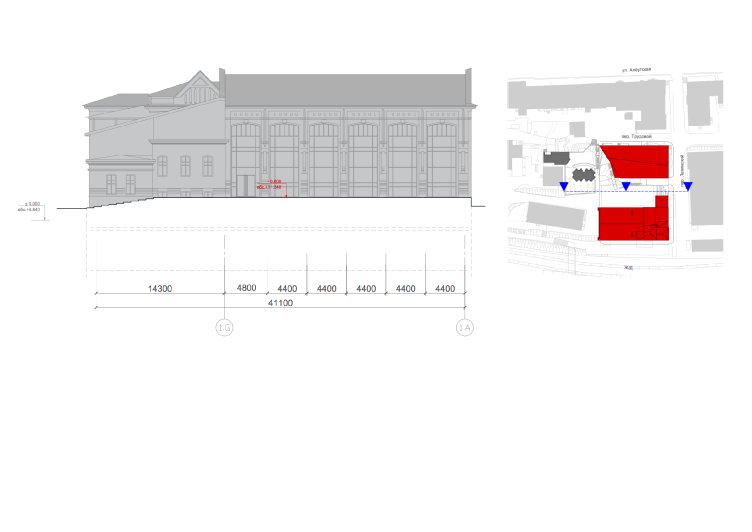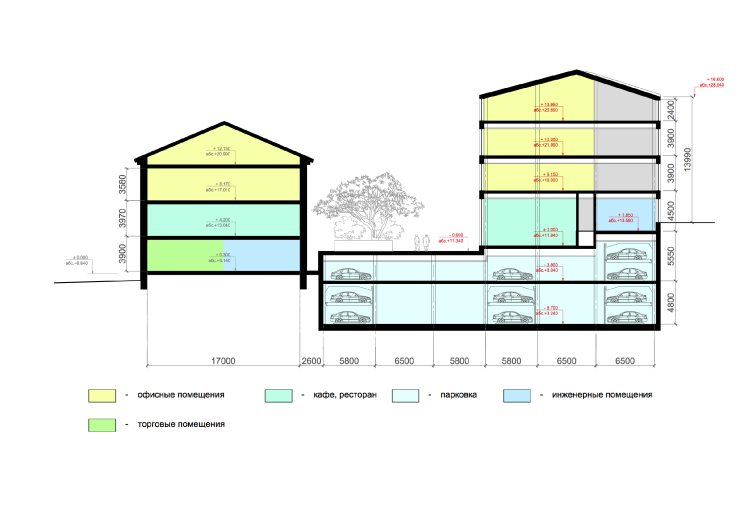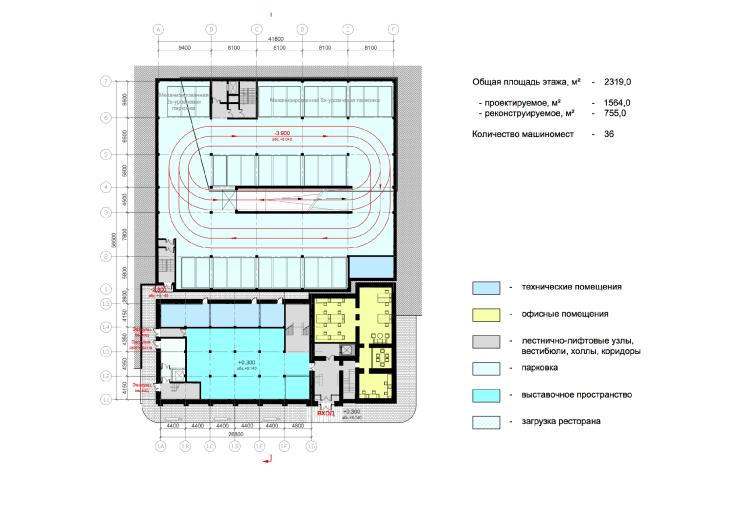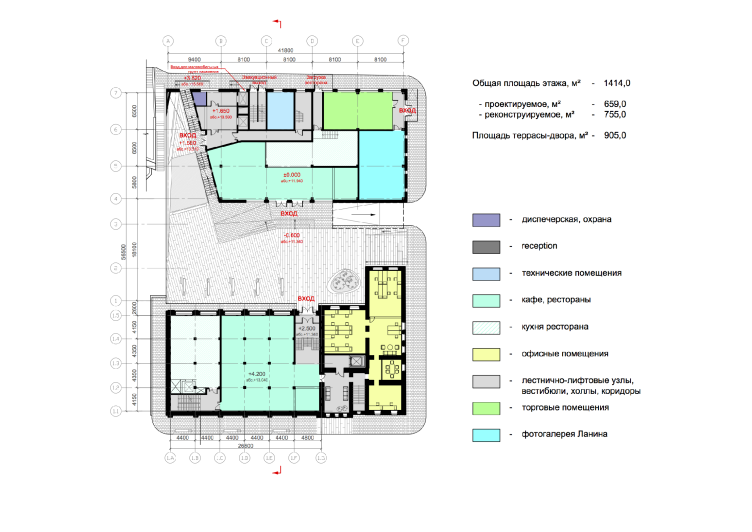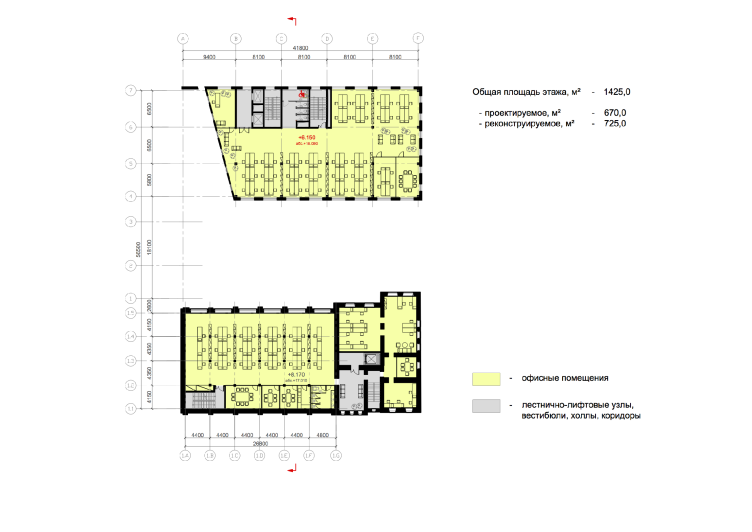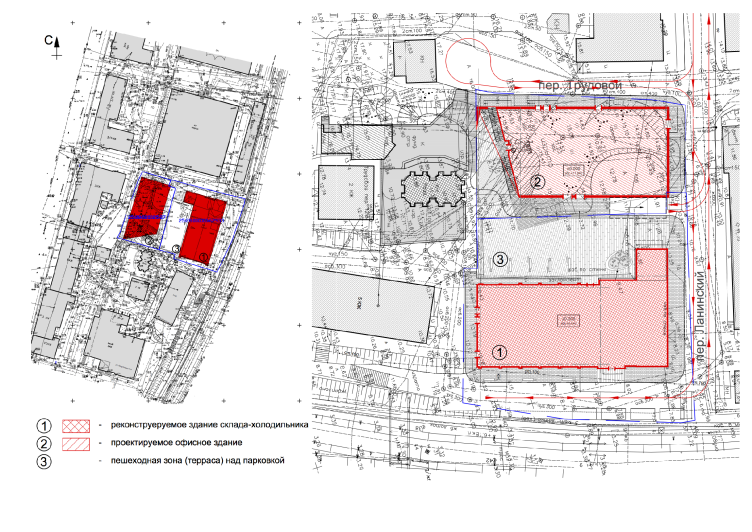This sophisticated multitask project is currently in its approval stage. In spite of the fact that, by the standards of ABD Architects, this work is unusually small-scale, the proposed solutions can have a considerable impact on the set routine of the city's life in this part of Vladivostok. The rectangular plot in the very center of the city has such a complex terrain that finding the successful location of the building was quite a tough call. As difficult was inscribing it into the context of the local urban texture.
Culture and business center "Union" © ABD architects
Culture and business center "Union" © ABD architects
Culture and business center "Union" © ABD architects
Originally, a few tasks were posed before the architects, the first of them being returning to the city the now-derelict building of the cold storage. Exactly one hundred years ago it was built by the company "Union" for keeping the frozen meat brought in from Australia. Supposedly, one of the participants of that project was one of the key figures of Vladivostok, architect and engineer Vladimir Planson. So, this is indeed an important monument for the city. Handling the specific issues that the building, totally unfit for contemporary needs and many times rebuilt, presented was also quite a chore.
Culture and business center "Union" © ABD architects
The rectangular volume, with a clearly readable on the plan administrative part at the side end and the added later "outstanding" substation (total area about 2700 square meters), will be stuccoed and painted the historically correct white. The freezer, in fact, has completely blind walls: the windows were only there in the office premises situated in the north part of the building. Making new openings in the walls that had the official status of an architectural monument was out of the question. As a result, only one wall, the one that is turned to the yard, upon the approval of the historical monuments conservation committee, will have any windows in it - really large ones. However, thanks to the small depth of the building they will be quite capable of providing the sufficient level of ambient light. The top floors will be occupied by the quite unusual for Vladivostok type of office space - the creative co-working: the work tables will be placed near the windows, and the meeting rooms will be moved over to the blind wall, along with the kitchen, the restrooms, and other premises that do not require the ambient light.
Culture and business center "Union" © ABD architects
Culture and business center "Union" © ABD architects
The dark basement floor will house extra expo spaces. The original metallic structures of the historical building will be by all means preserved. The outdated frequent rhythm of the supports, on the one hand, makes the inside space slightly inconvenient for the usual office but, on the other hand, adds to the building's historical authenticity.
In its shape and size (practically the same 2700 square meters, the same four floors, and the same gable roof), the new building to its historical neighbor. Their interrelation are about a respectful dialogue, and close mutual work, and some argument, and even a bit if competition. "We wanted the new building to be as laconic as possible and not really bold in color: the buildings around it look too motley as it is, and they are different in height, too. When we came to this place, absolute chaos ruled here, and we needed to bring it to order, organize it somehow" - says one of the authors of the project Anton Savelyev. The two underground tiers occupying the space under the paved courtyard are the parking garage. The first floor will house a restaurant, small shops, and the exhibition gallery of Vladimir Lanin - the famous local photographer of the late XIX century. The top three floors will be completely rented out as the office of one company.
Culture and business center "Union" © ABD architects
Culture and business center "Union" © ABD architects
Culture and business center "Union" © ABD architects
The shape of the building was practically dictated by its surroundings - the architects simply "listened" to it carefully. For example, besides the cold storage warehouse, there is also the historical water tower standing next to the land plot. There was no task of highlighting this object or take its dimensions into consideration in any way but nevertheless the architects deemed it necessary to pay homage to it lowering the height of the new building's roof in its direction. The result is a subtle, almost invisible, "courtesy". For the same reason, the attractive-looking cutaway of the side wall appeared: it was just "turned" a little bit in the direction of the tower. Part of the "empty" casing of the building, however, the architects preferred to keep intact. The resulting asymmetrical "marquee" and the interesting-looking "screen" wall accentuate the entrance still more, protecting the territory of the courtyard from the wind and the rain, and help to separate and organize the pedestrian flows.
The "screen marquee", however, is by far not the only element of this visual play that the architects introduced into the neutral and calm image of the new building. First of all, the size of the windows changes all the time. While on the main facades, as one's gaze goes up, they grow wider, turning from the narrow slit-like kind to large, almost panoramic, windows, on the side walls, conversely, they grow narrower, threatening to disappear completely. The authors of the project say that they ultimately got quite a jigsaw puzzle here. The second technique is combining two differently textured materials on the facades. Initially, it was planned that in the main facade a cozy type of wood would be used, the type that would look like the soft warm "undergrowth" covered on top by the coarse fur of the natural stone, with the "undergrowth" showing through it. However, on second thought, the architects considered this solution too rash, and opted for the more reserved but as contrastive and sophisticated combination of metal of a warm tone on the main facade and stone everywhere else.
Facade © ABD architects
The last but not least constituent part of the work was the task of forming comfortable city territories between the two buildings of the complex. Such territories are practically non-existent in Vladivostok now. Every day, this area has people going through it towards the central railway station located nearby, and back again, so the architects had to, first of all, divide the pedestrian flows: because what kind of "comfortable" territory can you create in a pass-through yard? It was possible to achieve by using the complex terrain of this territory, supplying it with a sophisticated system of stairs and landings. As a result, the space between the two buildings turned into a practically isolated courtyard.
Culture and business center "Union" © ABD architects
Securely protected from the wind, the paved territory that provides a separate entrance to the restaurant, will allow for organizing an open-air terrace in the summertime; it will also give the office workers an opportunity to go out for a breath of fresh air. And the steep green slope can be used, for example, as an open-air movie theater, of course, weather permitting. The noise of the big city life and the local strong sea winds are additionally fenced off by that same fragment of the new casing of the building that forms this cozy and protected micro-world.
The saturated functional program in combination with the surrounding houses and the challenging terrain made the architects deftly navigate through a lot of underwater stones. And, as strange as it may seem, it was this necessity of navigating that prompted the most interesting and bright solutions. And the seeming lack of logic in some of the applied techniques goes a long way to draw close attention to the building. "This project is not at all as simple as one might think at first sight. Yes, you can criticize some of our solutions, for example, the fact that the location of the entrances to the new buildings is not really obvious, but we are quite certain that all of our solutions are the best possible under the given circumstances. I think we have been able to create a balanced project and solve all the issues we had to solve" - says Anton Savelyev.
Facade © ABD architects
Facade © ABD architects
Facade © ABD architects
Section view © ABD architects
Plan of the basement floor © ABD architects
Plan of the first floor © ABD architects
Plan of the second floor © ABD architects
Location plan. Master plan © ABD architects

